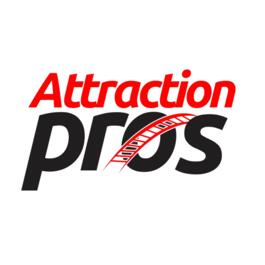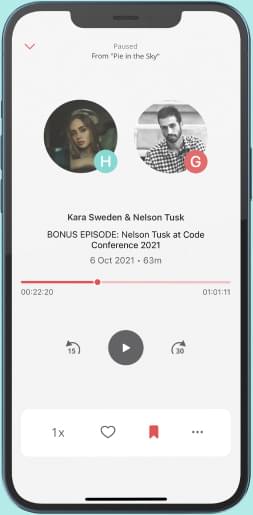
Episode 422: Gina Elliott and Jason Haycock talk about digital training transformation, immersive employee experience and investing in your team
Looking for daily inspiration? Get a quote from the top leaders in the industry in your inbox every morning. What’s the one premier event that brings the global attractions industry together? IAAPA Expo 2025, happening in Orlando, Florida, from November 17th through 21st. From breakthrough technology to world-class networking and immersive education, IAAPA Expo 2025 is where you find possible. And, just for our audience, you’ll save $10 when you register at IAAPA.org/IAAPAExpo and use promo code EXPOAPROSTEN. Don’t miss it — we won’t! Gina Elliott is the VP of Strategy and Administration of Slick City Action Park, and she now serves as chair of the International Association of Adventure & Trampoline Parks (IATP), where she champions scalable training, safety, and culture across parks of all sizes. Jason Haycock is the Director of Strategic Accounts of Schoox, bringing eight years in enterprise HR technology to mobile-first learning for large frontline workforces. Together, Gina and Jason spotlight how digital platforms, blended with in-person training and coaching, elevate performance, reduce risk, and boost retention. In this interview, Gina and Jason talk about digital training transformation, immersive employee experience, and investing in your team Digital training transformation “Training is such a critical piece… there is a direct correlation with training and safety… transitioning to an LMS… you can push that down to the hourly employee and you’re gonna get that instant notification of when it’s done.” Gina contrasts “pencil-whipped” PDFs and broken binders with a mobile-first LMS that meets today’s frontline where they already learn—on their phones. Digital courses, instant transcripts, and exportable records simplify audits and incident response while allowing rapid, system-wide updates without reprints or classroom bottlenecks. “It’s surprising to us that we’ll show up and see that they’re still using paper. We really have an emphasis on meeting these employees where they are, being able to learn quickly and on the go.” Jason explains how short, role-specific modules and micro-assessments accelerate time-to-productivity for younger teams accustomed to bite-sized learning. He notes outcomes such as faster onboarding, sales lift, and reduced injuries/premiums when digital training is paired with clear expectations and live practice. Immersive employee experience “You can build the best park, but if your employees aren’t trained or even understand what an immersive experience is, you’ve lost that guest, and it’s gonna be very hard to retain them.” Gina reframes immersion as an employee mandate: blend brief videos, interactive elements, leaderboards, and hands-on tasks so every learning style is engaged and confidence builds before live guest contact. She stresses pacing: begin with a 10–15-minute orientation, verify knowledge, then layer responsibilities over 30/60/90 days instead of “300 modules” on day one. “These frontline employees… learn differently than a corporate employee… It’s ongoing training in addition to what they have for onboarding.” Jason adds that evolving parks (VR next to ax-throwing, bowling, pickleball) demand agile cross-training. Quick, on-the-spot refreshers and continuing modules keep skills current as attractions and technology change, while managers observe and coach to certify real-world proficiency. Investing in your team “Make your employees feel like they’re heard and they’re valued. If it comes to spending that money at the beginning, do it. It’s going to ultimately lead to a better customer experience, a better employee experience, and a more successful business.” Jason frames training as a proactive investment, not an expense: organizations already “pay” through turnover, weak sales, and incidents if they undertrain. Upfront investment converts training into a competitive advantage—supporting growth, reviews, referrals, and retention. “We saw a park with a 90% completion rate actually increase sales… Another park in the low twenties had turnover of 90%.Culture always has a focus on training.” Gina shares case studies linking completion rates to front-desk sales and lower turnover. She advises reading performance holistically, such as training data plus social scores, mystery shops, and sales, to target coaching. Her closing push: don’t fear technology; toss the binders, start small with digital courses, and keep coaching continuously. Find Gina on LinkedIn, or visit indoor@adventureparks.org for IATP resources and the IATP Academy. Reach Jason on LinkedIn or visit schoox.com to learn more about Schoox. This podcast wouldn't be possible without the incredible work of our faaaaaantastic team: Scheduling and correspondence by Kristen Karaliunas To connect with AttractionPros: AttractionPros.com AttractionPros@gmail.com AttractionPros on Facebook AttractionPros on LinkedIn AttractionPros on Instagram AttractionPros on Twitter (X)
From "AttractionPros Podcast"


Comments
Add comment Feedback